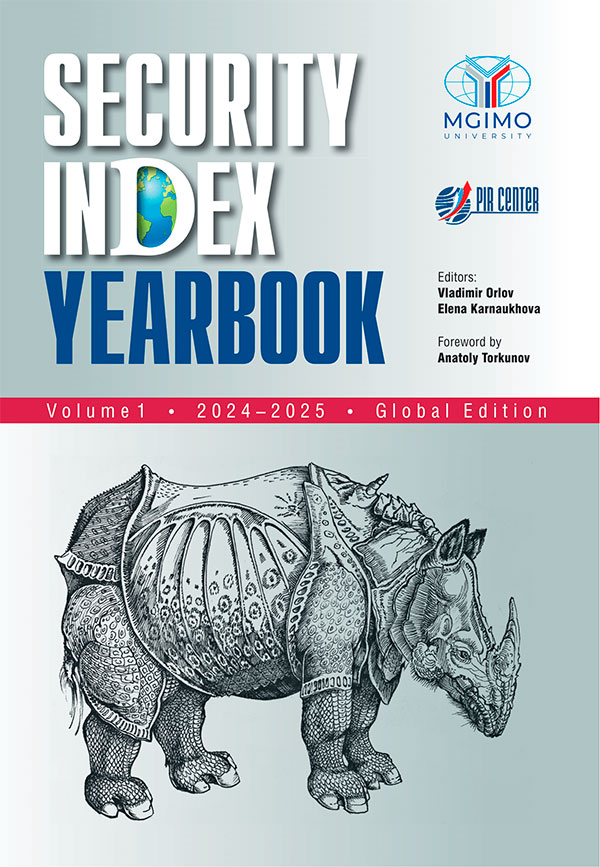The ongoing spectacular U-turn in the bilateral relationship became possible only thanks to the personal position of the 47th President of the United States. The changes remain fragile and reversible
At this moment, the main driver of the emerging positive dynamics of the Russian-American dialogue is the personal desire of President Donald Trump to become the main peacemaker in resolving the conflict between Moscow and Kiev. Everything else, including the movement towards normalization of bilateral...
... widely perceived as disruptive and deconstructive, it serves as one of the accelerating forces in the all-dimensional restructuring taking place in international relations.
Andrey Kortunov:
Can U.S. New Tariffs Trigger Structural Changes in Global Economy?
As the world tries to make sense of what this blanket tariff policy means for—and how it affects—their economies, speculation outweighs substantiation within the global economic matrix of what can be termed the late stage of capitalism. It ...
... Arctic
Similarly, the Eurasian region has witnessed these trends since the 1990s; Asian economies saw a rapid take-off in the 1990s, ASEAN and Gulf countries, as well as India and China, saw an economic boom at the end of the 1990s, while the Russian economy grew rapidly. As the years passed, a similar phenomenon could be observed in Central Asia, the Caucasus, and South Asia, resulting in a major shift in international politics; the economic center of gravity was shifting eastward as supply chains ...
... protectionism. The next stage of Euro-Atlantic relations will unfold in the realm of clashing economic interests and inevitable conflicts, where Germany plays the role of the European Union’s central hub.
Germany: The Epicenter of Clashing Market Economy Models
Amid the global reshaping of geoeconomic priorities, Germany finds itself at the center of a mounting collision between two economic and political approaches: U.S. neo-protectionism and the European model of “green” transformational ...
... memory of human beings. This change was famously observed by Chinese President Xi Jinping when he
said
, “Our world is undergoing profound changes unseen in a century.”
Andrey Kortunov:
Can U.S. New Tariffs Trigger Structural Changes in Global Economy?
On April 2, 2025, U.S. President Donald Trump
unveiled
an early 20
th
-century type of economic policy, increasing tariffs on countries unseen since the
Great Depression of 1929
. From a
baseline
of 10 percent to a maximum of 46 percent, ...
... to find the way to organise vast space around itself, as well as balance interests in Eurasia with India and China. The 2023 Foreign Policy Concept states Russia’s unique geographic position and its transit potential as a means to advance national economy and improve transport and infrastructural connectivity in the region [
5
]. However, the document pays more attention to how the latter may transform it into common space of peace, stability and prosperity through building Greater Eurasian Partnership ...
....5% on EU cars. [
4
]
Food and Beverages: U.S. exporters face a tariff gap of 3–3.5 percentage points higher than their EU counterparts. [
5
]
Non-Tariff Barriers (NTBs)
Andrey Kortunov:
Can U.S. New Tariffs Trigger Structural Changes in Global Economy?
Beyond tariffs, non-tariff barriers (NTBs)—including import quotas, subsidies, strict regulations, bureaucratic customs procedures, safety standards, local content rules, and environmental restrictions—impose significant hidden costs on U....
... trade to almost nothing.
China’s De-dollarization Mechanisms within the Yuan Internationalization Strategy. RIAC Report
Washington still buys some fertilizers and platinum from Moscow, but these purchases are not critically important for the U.S. economy and do not directly challenge U.S. local producers. Though Moscow has a trade surplus with Washington, this surplus is negligible compared to the total $1.2 trillion trade deficit.
One could add that Cuba, Belarus, and the DPRK were excluded from ...
... the yuan internationalization process. The study outlines China’s key de-dollarization mechanisms and evaluates the yuan’s potential to become a major reserve currency. In addition, the report examines how China’s strategy affects the Russian economy, comparing Moscow and Beijing’s de-dollarization approaches, and offers recommendations for developing Russia’s de-dollarization policy
China’s De-dollarization Mechanisms within the Yuan Internationalization Strategy
, 2.8 Mb
... pertinent to explore the gradual evolution of the group, in order to properly understand the much-discussed informal organization of emerging economies.
Evolution of BRICS
Alexander Ignatov:
BRICS Expansion and Prospects for BRICS Cooperation in the Digital Economy
As mentioned earlier, BRICS is an informal grouping of emerging economies. It is a denotative acronym of its founding/core member states namely, Brazil, Russia, India, China and South Africa. The acronym was first
introduced
by Jim O'Neill (a ...



